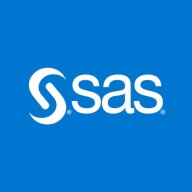

SAS Access and SAS Data Management compete in data integration and processing. SAS Data Management often leads due to its robust features.
Features: SAS Access provides real-time data access across diverse environments, ensuring seamless connectivity. Its simplicity in handling data across platforms enhances operational efficiency. SAS Access effectively supports quick data retrieval processes, making it suitable for dynamic data environments. SAS Data Management integrates comprehensive tools for data quality assurance, providing advanced governance and integration capabilities. It includes features for meticulous data cleansing and systematic data governance, supporting in-depth management tasks. These broadened functionalities make it ideal for organizations focused on thorough data processes.
Ease of Deployment and Customer Service: SAS Access is noted for its straightforward deployment, especially in environments already using SAS, offering a frictionless integration. It provides essential customer support to facilitate smooth operation and integration into existing systems. SAS Data Management, while presenting a more complex integration process, is supported by extensive training and support resources, advocating a complete deployment strategy. The available resources assist organizations in easing integration complexities and enhancing operational efficiency.
Pricing and ROI: SAS Access generally involves a lower initial cost, allowing for a rapid return on investment, suitable for businesses prioritizing swift outcomes. Investment costs are managed effectively, providing timely financial benefits. SAS Data Management, despite a higher initial investment, yields a prolonged ROI by leveraging its extensive features. These capabilities enhance broad data management outcomes, making it attractive for enterprises valuing long-term advantages. Organizations focused on durable value recognition find SAS Data Management beneficial in supporting extensive data management strategies.
| Product | Market Share (%) |
|---|---|
| SAS Data Management | 0.9% |
| SAS Access | 0.4% |
| Other | 98.7% |


| Company Size | Count |
|---|---|
| Small Business | 7 |
| Midsize Enterprise | 1 |
| Large Enterprise | 8 |
Every decision, every business move, every successful customer interaction - they all come down to high-quality, well-integrated data. If you don't have it, you don't win. SAS Data Management is an industry-leading solution built on a data quality platform that helps you improve, integrate and govern your data.
We monitor all Data Integration reviews to prevent fraudulent reviews and keep review quality high. We do not post reviews by company employees or direct competitors. We validate each review for authenticity via cross-reference with LinkedIn, and personal follow-up with the reviewer when necessary.